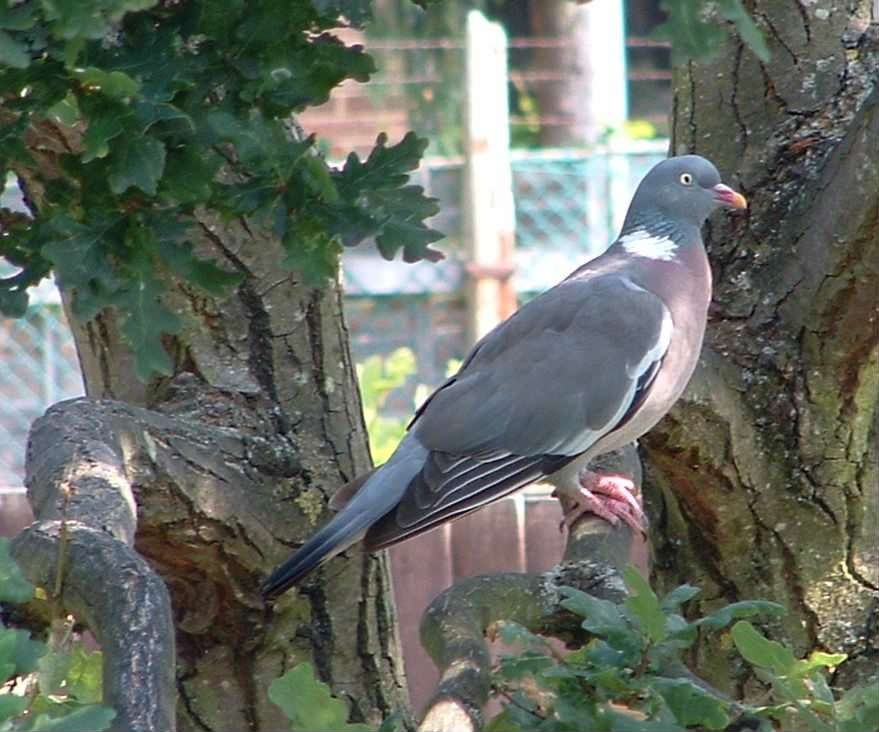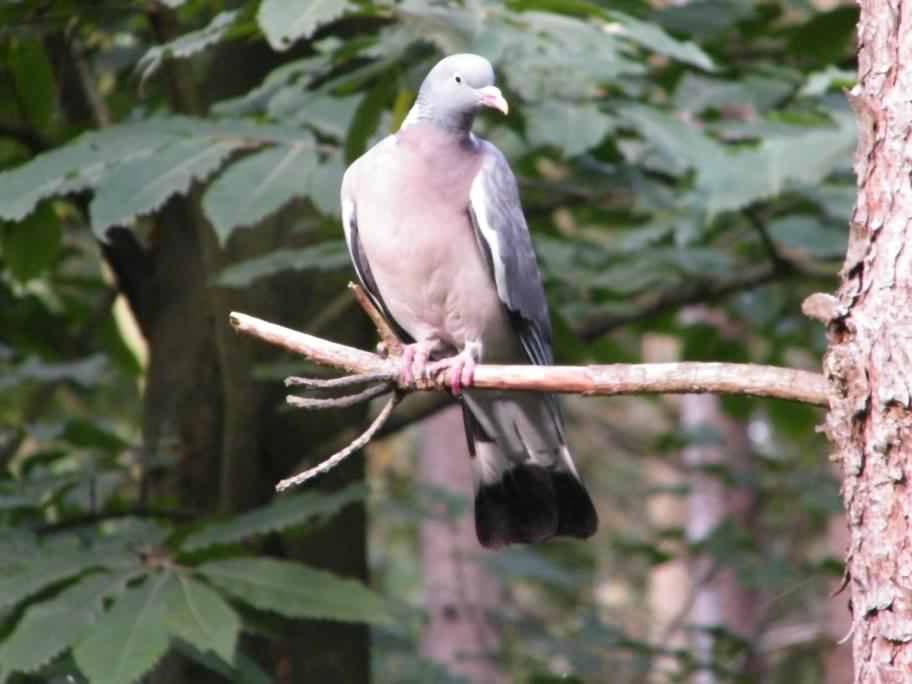
Photos ©2005–
Click any photo for a larger image


Photos ©2005–
Click any photo for a larger image

Wood Pigeon - Columba palumbus
Family - Columbidae
Also known as - Common Wood Pigeon
A common bird found in most areas of Europe, North Africa, and western Asia, common in the UK growing to 40–42cm (16in) with a wing span of 75–80cm (29–32in) and weighing about 450–550g (14–18oz). Overall grey in colour with a purple and green sheen, pinkish breast and green, white and purple patches on the neck, its eye is a bright yellow. Juvenile birds are more brown and generally duller, lacking the white patch on the neck. Wood Pigeons have a tendency to "waddle" when they walk giving them an appearance of being overweight. A white bar across the middle of the wing is prominent during flight. Mainly a ground feeder they eat seeds, grain, berries and acorns (becoming a pest in agricultural areas, occasionally doing some damage to crops), but will feed on almost anything that is placed on a bird table. Eating mostly grain they tend to drink quite a lot because they do not get sufficient moisture from their food, unlike birds that eat earthworms, etc. Whilst drinking they use their beak like a straw, whereas other birds scoop the water up and throw their heads back to let it flow down their throats.
A fragile nest forming a platform is built from twigs by both sexes usually in a fork of tree branches or on a building, occasionally reusing Crow or Squirrel nests. Brooding up to three times a year between April and August, laying two white eggs per clutch that are incubated by both parents for about 17–18 days. The chicks known as squabs are blind for the first 10–14 days being fed with "pigeon's milk", a liquid regurgitated from the crop. Leaving the nest at 20–29 days, the young perch nearby where they continue to be fed by the parents. They are usually about 35 days old before they are capable of independent flight. A display flight is performed during the breeding season where they fly upwards, clap their wings, and then glide downwards.
Site design ©1999– Brickfields Country Park - Privacy -